Oktoberfest is one of those events you need to experience at least once in your life. This world-renowned festival of beer taking place from mid-September to early October draws more than six million visitors each year to southern Germany’s Bavarian capital of Munich.
I was fortunate to attend Oktoberfest in 2019—the last one before Covid shut it down for two years—and even though I’m partial to wine, I reveled in elbowing my way through the crush of humanity to swill back a few liters of lager. (There is a wine tent at Oktoberfest in case you’re wondering!)
Fun Fact:
The year with the highest number of attendees was in 1985. At this 175th anniversary Oktoberfest, roughly 7.1 million people visited the festival.
To inspire your own Oktoberfest adventure, I’ve put together some fun facts about the festival and Bavarian beer culture with the help of my brother, who lives in Munich and leads beer tours in his spare time.
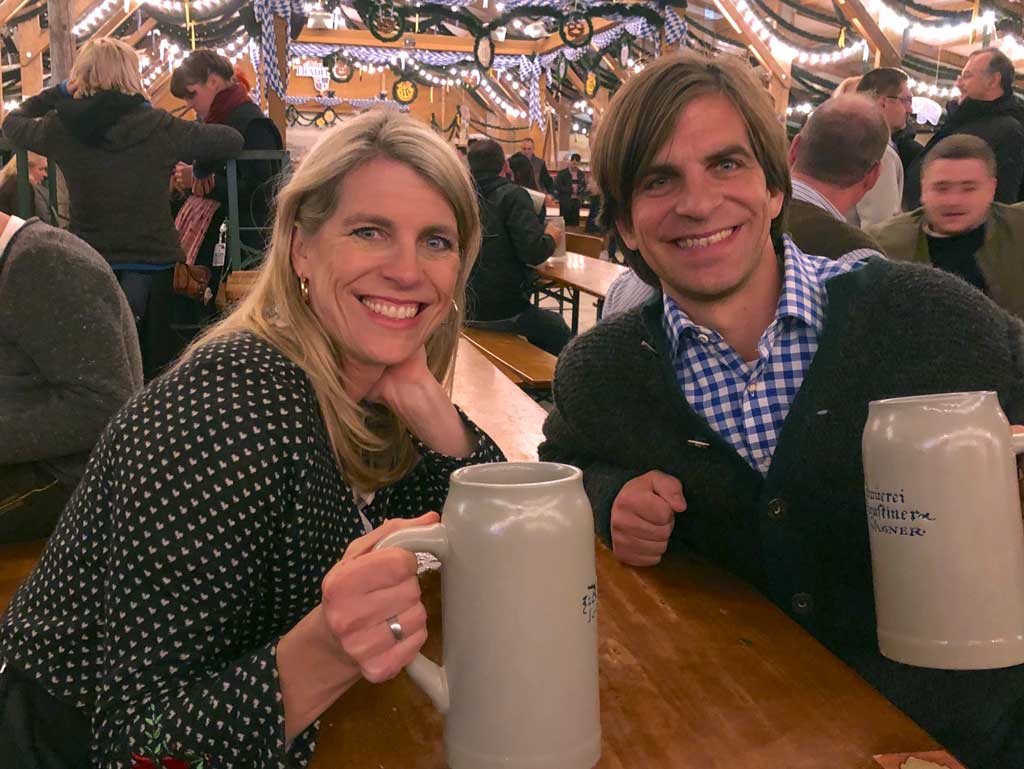
It All Started with a Wedding
Oktoberfest dates back to the wedding of Crown Prince Ludwig to Princess Therese of Saxony-Hildburghausen on October 12, 1810. To celebrate the royal nuptials, the citizens of Munich were invited to the festivities, which featured a horse race held on the fields in front of the city gates.
The fields were later named Theresienwiese (Theresa’s Field) in honor of the Crown Princess, and for its more than 200-year history, Oktoberfest has been held in this same spot, now encompassed by today’s much larger city. If you look at a map of the Oktoberfest grounds, it has retained the oval footprint of the original horse track, although since World War II, the once obligatory horse race has only taken place in the anniversary years of 1960 and 2010.
Over the past two centuries, Oktoberfest has grown and evolved to become the world’s largest folk festival. In the late 1800s, booths and carousels with electrical lighting appeared, performers were added, and due to increased demand, the breweries set up huge beer tents with musicians, instead of the usual small beer stalls. The first roasted chicken outlet opened in 1881, and traditional chicken is served to hungry Oktoberfest visitors to this day.
Why Does Oktoberfest Take Place in September?
The Oktoberfest celebration originally lasted five days; however, over time it became larger and grander. As the festivities stretched out, the starting dates were moved into September, presumably to take advantage of the longer and warmer days. The festival always ends during the first week in October.
It’s Not Just About The Beer
Oktoberfest may seem to be nothing more than a drunken party attended by tourists and college students. But it’s actually a family festival with rides, booths, and attractions outside the beer tents—similar to a state fair in the United States (with much better beer of course!) The evenings tend to be more raucous, but during the day, local families with children of all ages come to enjoy the rides, entertainment, and good food.
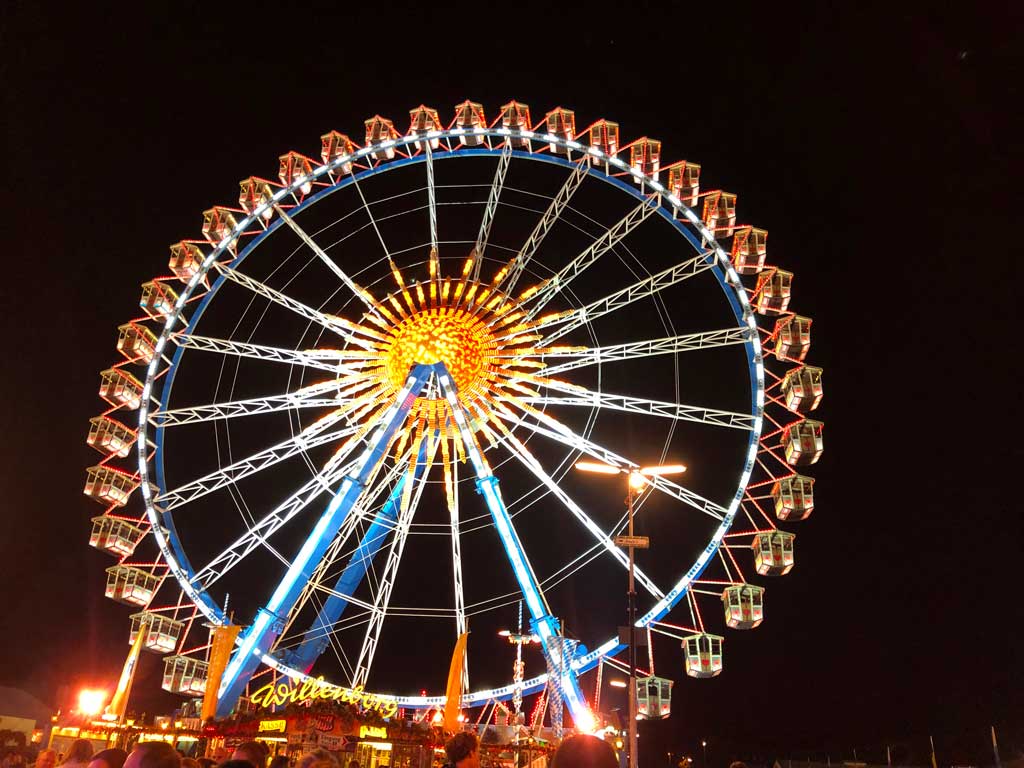
Don’t Miss “Traditional Oktoberfest”
There’s a section of Oktoberfest, with a separate entrance, called Oide Wiesen (Traditional or old-fashioned Oktoberfest), which you must visit to authentically experience the celebration.
Oide Wiesen was introduced in 2010 during the festival’s 200th anniversary and was so popular they decided to keep it. It only takes a year off if the Bavarian agricultural fair, which is every four years, happens to be on at the same time. The next time will be in 2024.
At Oide Wiesen, everything is a bit cheaper, and you’ll get to experience traditional music and dance inside the beer tents until closing.
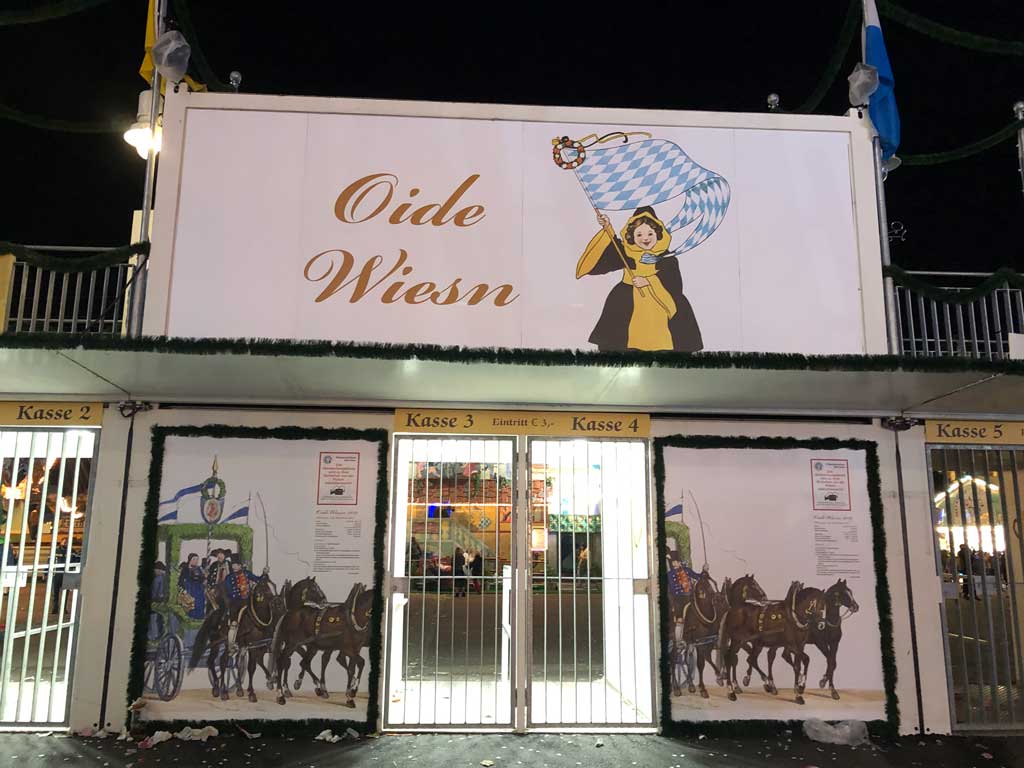
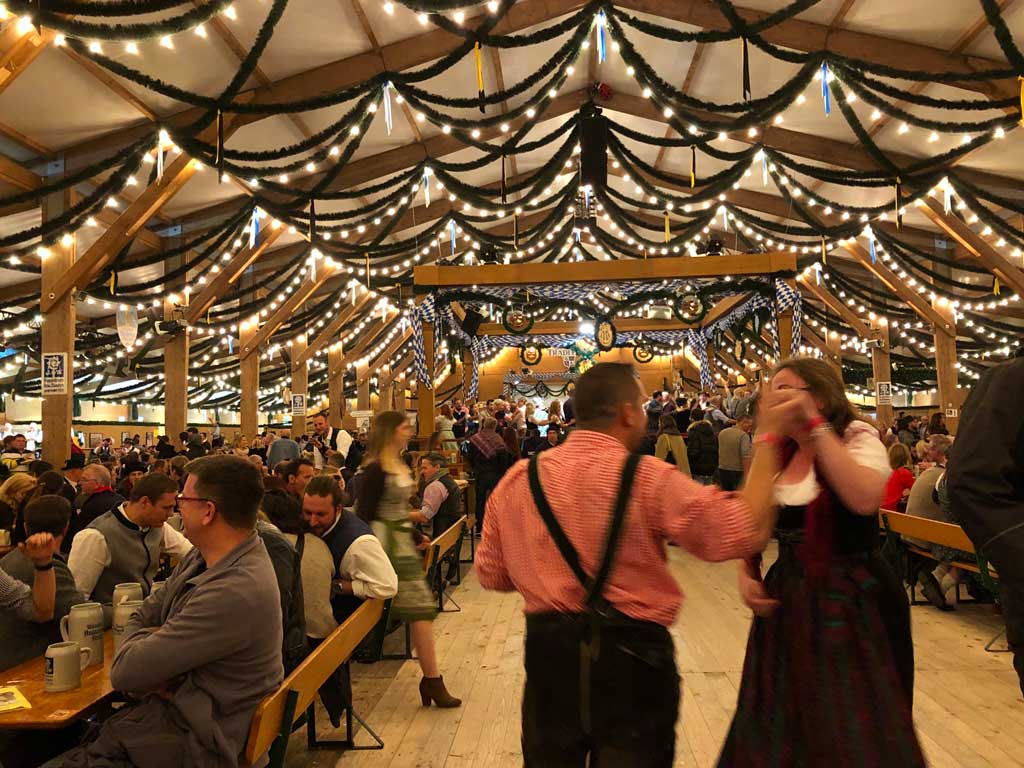
Speaking of tents, it’s worth pointing out that the most crowded beer hall is generally Hofbräu, a favorite among American and Australian tourists. By day, the traditional brass bands play, but in the evening, schlager, or cheesy party music, kicks in to everyone’s drunken delight. It’s fun to check out Hofbräu, but don’t make it your only stop.
Fun Fact:
The largest beer tent of all time was the Pschorr-Bräurosl tent in 1913. With its 5,500 square meters, it held around 12,000 guests. Today, Hofbräu-Festhalle is the tent with the largest capacity at about 10,000 seats.
Don’t Leave Home Without the Lederhosen
The traditional clothing, or tracht, you see Germans wearing at Oktoberfest (and the cheap Amazon knock offs worn by many tourists) were actually working-class attire that at some point became fashionable.
Traditional lederhosen are like American overalls, worn by men working in the forest or mountains, while servant girls wore dirndls, those bosom-lifting dresses of St. Pauli girl fame, in the homes of their aristocrat employers.
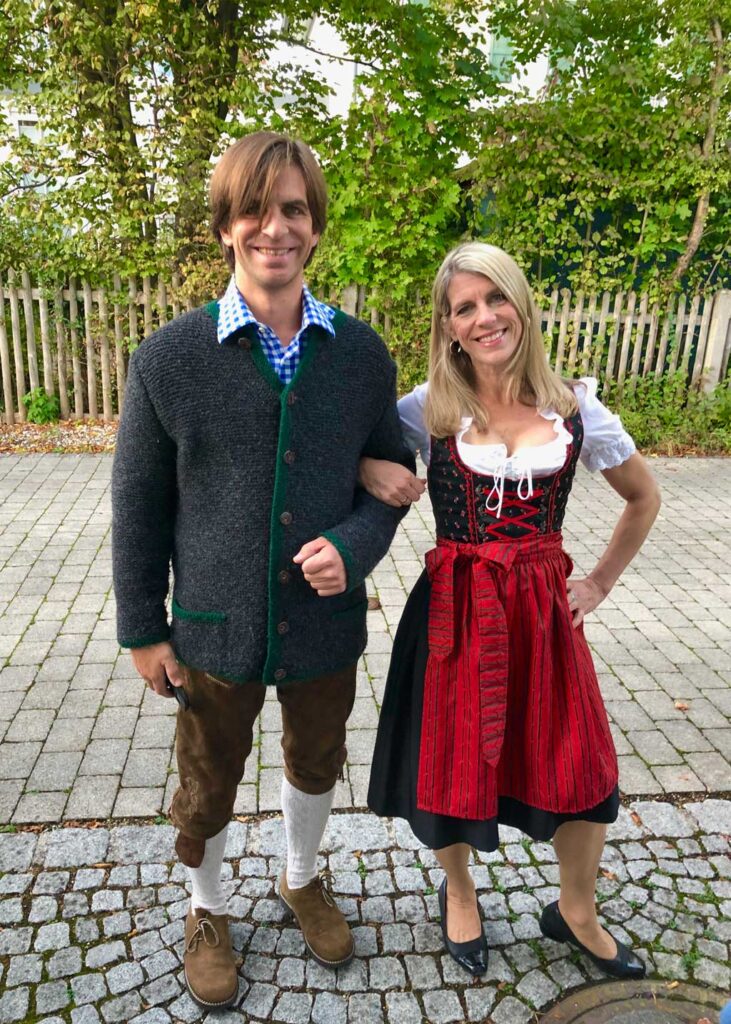
Know Your Beers
The official Oktoberfest beers are all lagers brewed exclusively by Augustiner, Hacker Pschorr, Hofbräu, Löwenbrau, Spatenbräu, and Paulaner. Each of these six brands have their own special Oktoberfest brews, which they serve in huge tents on the festival grounds. They are also available outside of the festival (even if and when Oktoberfest celebrations are cancelled) starting in late-August/early-September and until they run out, which is usually in October.
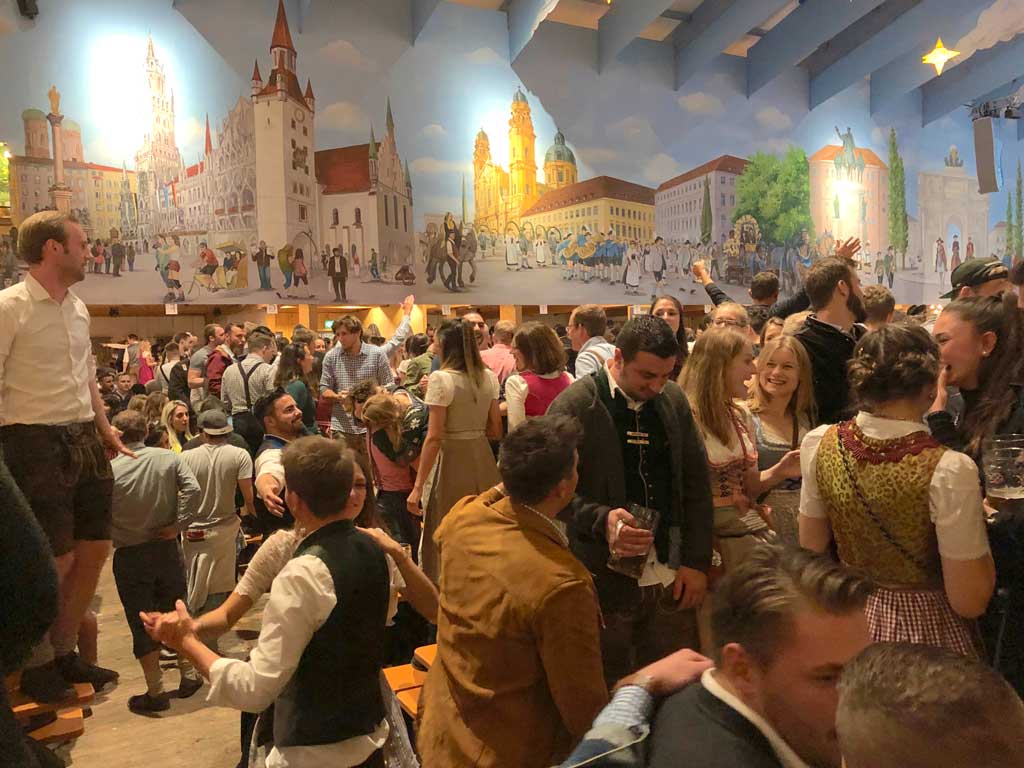
Fun Fact:
The tapping, or opening, of the first beer barrel at Oktoberfest has been a tradition since 1950 when then-mayor of Munich, Thomas Wimmer, called the famous words “O’zapft is!”(strike it lucky) for the first time. Since then, his successors must do the same, with their reputations hanging on the number of strokes required—the fewer the better!
Getting into the nuts and bolts of beer brewing, lagers, unlike ales, need to be brewed in cold weather. So, back in the day before refrigeration, the traditional Oktoberfest lagers were brewed in March (thus called Märzen, which is German for March) and stored in underground cellars. To further preserve the Märzen brew, they added more alcohol which is one of the best ways to keep beer. This is why Oktoberfest beer has an alcohol content of about 6%, as opposed to a normal lager with 4.5% to 5%.
A Word About Beer Gardens
While not specific to Oktoberfest, beer gardens, or biergarten, are a cultural fixture in Bavaria, and have been copied in some form or another worldwide. Beer gardens originated in Munich when brewers used underground cellars to store their winter-brewed Märzen throughout the warm spring and summer months.
To keep the cellars cool, the ground was covered with white pebbles that reflect heat from the sun, and chestnut trees were planted for shade. To this day, even with refrigeration, the tradition of pebbles and chestnut trees at beer gardens continues. They are the marks of a true biergarten.
When most people think of biergarten, the famous Hofbräuhaus comes to mind with loud, wall-to-wall tourists downing steins of beer. In reality beer gardens found throughout southern Germany are more subdued, with friends and families gathering outside at long picnic tables.
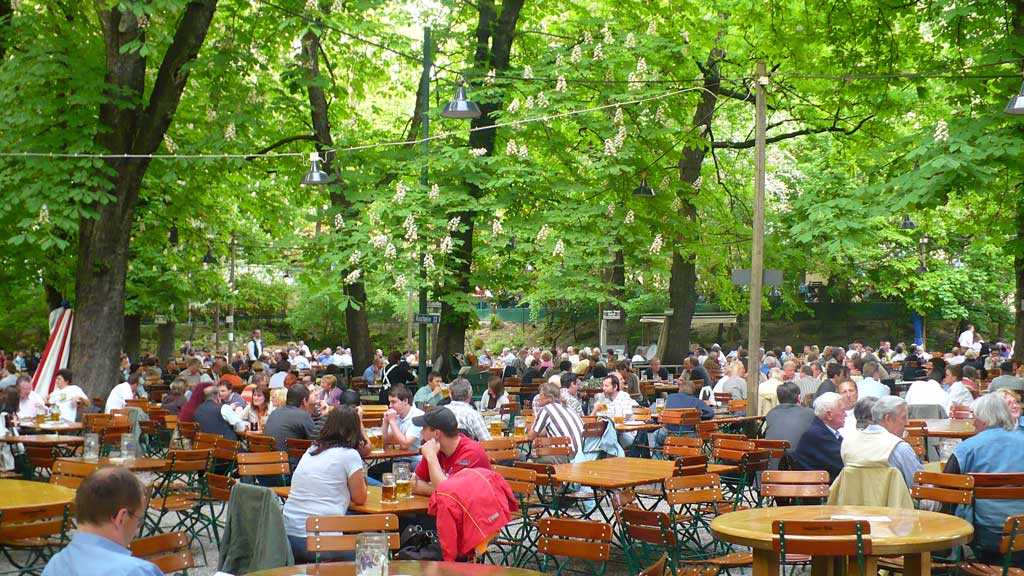
At the biergarten, there is plenty of food and beer to purchase, but customers may also bring their own picnic. This dates back to the early 1800s when beer gardens initially started selling beer, leading restaurants and taverns to complain about unfair competition. The dispute eventually landed on the desk of Bavaria’s first king, Maximilian I, who signed a royal decree that allowed brewers to sell beer, but not food, thus birthing the tradition of the biergarten, with food now being served.
The nice thing about beer gardens is that you can enjoy them anytime of year in Germany. Sure it’s great to experience Oktoberfest at least once in your life, but no matter when you go, you’ll never miss out on great beer.
